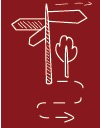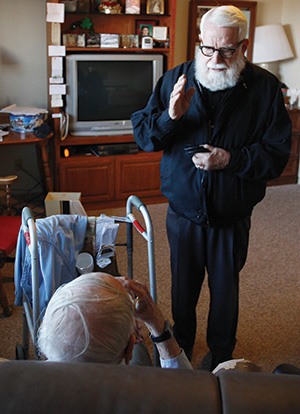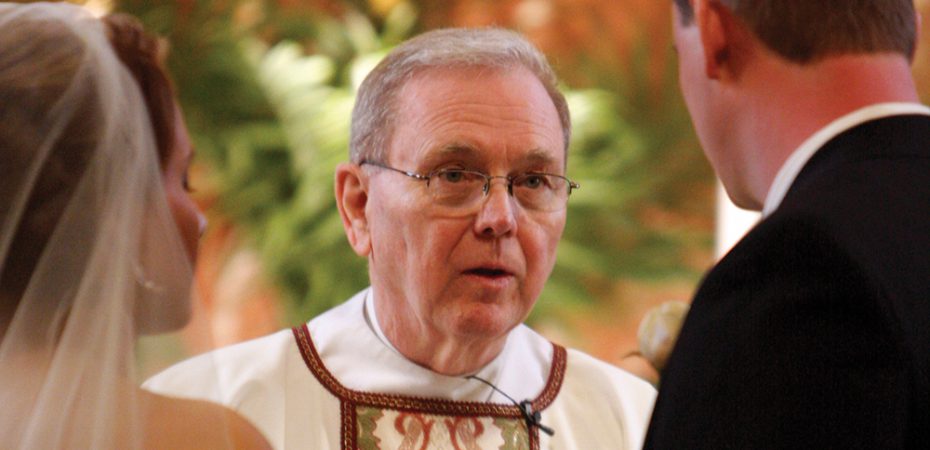Meeting People Where They Are
How deacons can convert secular moments into pastoral encounters
Deacon Anthony Gooley 1
One of the great challenges of pastoral encounters in the highly secularized context in which we live is to meet people where they are and not where we would like them to be. Many of the couples who come to us for marriage are already living together and many have children from that or some previous relationship. We encounter families who want a Catholic funeral for a parent but who have few strong bonds with the Church apart from a residual identification that may only extend to acknowledging that they were baptized Catholic. Catholic schools are very popular and many parents send their children to the school without the family having any connection with a Catholic parish.
In this reflection, I am focusing on ordained ministers. I have in mind primarily deacons. Deacons are called to be heralds of the Gospel. They are to seek out and proclaim the Gospel to those who are far from it. As ministers who are of the Church and living the same kind of life as most women and men in the societies in which they find themselves, they have access to ways and means of pastoral encounter often not available to presbyters.
Rules of Encounter
To take the marriage example mentioned above, we need to recall that fewer couples choose a religious marriage, let alone a Catholic one, over a secular celebration. The choice for a Catholic wedding, no matter the motivation, represents, at least, a choice for a religious context. Certainly, if a parish has a pretty church with a long aisle down which a bride can show off her dress, it is more likely to receive wedding bookings than a 1970s Pizza Hut-style church with almost no aisle to speak of. Therefore, perhaps a pretty church wedding was a primary consideration for the couple. It makes a nice backdrop for the photos.
Thus it may not be a sign of a burning desire for God — I will grant you that. It is, however, a smoldering wick. I want to suggest some “rules” that should guide our pastoral encounters today.
…………………………………………………………………………………………………………………………………………………………
New Evangelization, New Ways, New Methods
Deacon Gooley observes that if Jesus is prepared to meet people where they are and not where he would want them to be, then deacons too should be prepared to take this risk in our pastoral encounters. This is not an excuse for laxity and not an argument to say that people should live as they can or want and not as they ought. Nor is this a turning away from the hard work of proclaiming the Gospel.
If we truly believe that Jesus is the way, the truth and the life, for all women and men, then we should never cease wanting to call people to this Good News. The New Evangelization calls for new ways, new methods of proclaiming the Gospel.
At the same time, the New Evangelization acknowledges what is good and positive in people and society, and seeks out that which we can build upon for a richer pastoral encounter. Pastoral encounters are always encounters between persons, not programs, systems, churches, institutions or something called religion.
…………………………………………………………………………………………………………………………………………………………
The Wavering Flame
 Rule No. 1: Do not quench the wavering flame (cf. Is 42:2-4). No matter how small that spark is, it can be rekindled. If the reception the couple receives from the minister is harsh, judgmental and immediately calls them to repentance, it is likely to be a reception that quenches the wavering flame and kills the spark of faith. If the welcome is warm and encouraging, and assumes a good intention in the couple to celebrate a Catholic sacrament, then there remains a possibility that this spark of faith, this little smoldering of faith, might burn a little brighter by the time the couple actually come to celebrate the wedding.
Rule No. 1: Do not quench the wavering flame (cf. Is 42:2-4). No matter how small that spark is, it can be rekindled. If the reception the couple receives from the minister is harsh, judgmental and immediately calls them to repentance, it is likely to be a reception that quenches the wavering flame and kills the spark of faith. If the welcome is warm and encouraging, and assumes a good intention in the couple to celebrate a Catholic sacrament, then there remains a possibility that this spark of faith, this little smoldering of faith, might burn a little brighter by the time the couple actually come to celebrate the wedding.
Patiently and slowly, the minister can open to the couple the richness of the Catholic understanding of marriage and invite them to consider a higher motivation. At no point should the minister lose the gaze of love as he works with them.
Companion on the Journey
 Rule No. 2: Be a companion on the journey (cf. Lk 24:13-35). All Christians are sinners in their own way and all have departed from the way of the Lord in some manner. We are not the perfect ministering to the imperfect. Pastoral encounter is peer ministry. Two imperfect people meeting, in the person of the minister and the person whom we have encountered in this pastoral moment, describes the reality of the encounter.
Rule No. 2: Be a companion on the journey (cf. Lk 24:13-35). All Christians are sinners in their own way and all have departed from the way of the Lord in some manner. We are not the perfect ministering to the imperfect. Pastoral encounter is peer ministry. Two imperfect people meeting, in the person of the minister and the person whom we have encountered in this pastoral moment, describes the reality of the encounter.
Our task as ministers is to accompany people and walk some of the way of their journey of life with them. In becoming a companion on the journey, we realize we are essentially walking the same road toward God. We have fallen into step with each other and are conversing along the way, and we are both trying to make sense of the journey and the events that have occurred. We are joined by a third companion when we walk this road in faith. Jesus enters into this relationship and explains the meaning of the events of life and enriches them with meaning. It is the minister’s openness and willingness to truly embrace the other as a companion, a fellow pilgrim, that makes this third thing possible. The third thing is Jesus present in this moment.
Beauty and Joy in Christ
 Rule No. 3: Reveal the beauty and joy of life in Christ (cf. Evangelii Gaudium, Nos. 15, 34, 167). In considering this rule, we need to get a little bit philosophical.
Rule No. 3: Reveal the beauty and joy of life in Christ (cf. Evangelii Gaudium, Nos. 15, 34, 167). In considering this rule, we need to get a little bit philosophical.
Christ does not reveal a religion. What is revealed in Christ is a way of being fully human and fully alive to all the possibilities of human life. It is not a personal flourishing only, but a way of being that aims to foster the flourishing of all human beings and to promote the conditions by which all people may flourish. It is a worldview and way of being that understands that the will of God is not opposed to human flourishing but the essential condition that makes such flourishing possible.
Human flourishing is characterized by beauty and joy. Our pastoral encounters need to lead people to experience the beauty and joy that comes from life in Christ. The catch here is that the minister must be a person who recognizes the beauty of life and radiates it to others. This thing called religion is a block and barrier to many people and their participation in the life of the Catholic community. They need to see that we are not in the religion business. Our business is human flourishing, and we have 2,000 years of wisdom to share as a way of experiencing that.
Meet People Where They Are
 Rule No. 4: Meet people where they are and not where we would want them to be. This, I think, is the most important and difficult of the rules. It is the most important because it truly acknowledges the journey of the other and the freedom of the other to be who they are and to decide and do what they do. Ultimately, the other has his or her life to lead before God and in conscience to live it the best way he or she can.
Rule No. 4: Meet people where they are and not where we would want them to be. This, I think, is the most important and difficult of the rules. It is the most important because it truly acknowledges the journey of the other and the freedom of the other to be who they are and to decide and do what they do. Ultimately, the other has his or her life to lead before God and in conscience to live it the best way he or she can.
Our task is not to make them live a life we would have them live, but rather to help form their conscience such that they can live as God intends them to live. God intends that all people flourish and find true happiness in their encounter with his love. Our task is to help them to learn to listen with the ear of the heart. If we don’t put out the little spark of faith, and if we can be a good companion on the journey, we just might help them learn to listen. But we will only do so if we have learned to listen with our own hearts.
It is the most difficult of the rules because it involves such risk. We cannot ultimately know how the journey will end and whether or not they will find their true home in God. The risk is that they will deny themselves the true and lasting happiness and full human flourishing that can come from a deep listening to God, and hence not find their way home. All that we can do is issue an invitation. We cannot insist that the receiver accepts the invitation. An invitation to love and be loved cannot command, it can only ask and offer.
Sometimes, people will deny what is most precious and life-giving for them (cf. Mt 26:69-75) at one point in life, but later come to embrace that which they have rejected later. We need to provide them room for the possibility of change. We cannot ever give up on the possibility of transformation.
…………………………………………………………………………………………………………………………………………………………
DEFINING LOVE
Deacon Gooley explains that Koine Greek has a number of words for love, two of which appear in the encounter between Jesus and Peter. One of these words is philor and the other is agape. Philor denotes the kind of love friends and equals have for each other. It is a reciprocal kind of love. Philor means I love you because you love me; if you watch my back, I will watch yours; and other kinds of give-and-take that make up a loving relationship among friends and family.
Agape asks something more of us. Agape denotes a kind of love that is for the sake of love itself, to love no matter the cost, to love without expectation of return or reciprocity. It represents the highest ideal of love and lifts and transforms the other kinds of love, eros (sexual love and passion) and philor, and directs both to their proper end.
………………………………………………………………………………………………………………………………………………………….
New Evangelization
Pastoral encounters in a missionary key, shaped by the New Evangelization, call us to a new ardor in proclaiming the Gospel. Ardor does not only mean with greater effort, but also greater passion. We want to go to where people are and encounter them as we find them because we have a passion for this task, a passion fired by the love of God, which the Spirit has poured into our hearts. The old assumptions of pastoral encounters like the ones we began with was that there was some shared meaning and shared worldview between the minister and those who sought him out in the encounter.
Today, it is more likely that they come with love (philor) in their heart, however, unclear on what the real object of that love may be, and no clear sense of the Body of Christ, which is the Church. If we are prepared to meet them where they are perhaps, we can increase the fire of the love already present, help them to see the face of Jesus and learn to live and love (agape) in the way God desires for them.
DEACON ANTHONY GOOLEY lives in Sydney and is a deacon of the Archdiocese of Brisbane, Australia. His ministry includes working on mission and identity formation in Catholic health and aged care settings. His most recent book is “Deacons Today: New Wine, New Wine Skins” (Coventry Press, $23.95).
………………………………………………………………………………………………………………………………………………………………
An Example of the Risk of Meeting People Where They Are
Deacon Gooley discusses the risks that come from meeting people where they are and not where we would wish them to be:

In the Gospel of John, Chapter 21, Jesus encounters Peter, who had denied what was most important and life-giving for him. Jesus asks Peter three times, what appears in translation, to be the same question three times; “Simon son of John, do you love me?” Traditional interpretations take the three questions to parallel Peter’s earlier three denials.
This is a moment in which Jesus calls Peter to repentance and to begin again. When we read the text in Koine Greek (the language of the Gospels), something deeper is going on in this story than a mere repetition of the same question and a simple canceling out of the three denials.
Jesus asks Peter the first two times, do you love (agape) me? Peter responds on both occasions, “Yes, Lord, I love (philor) you.” Peter’s response is a kind of no rather than yes, a partial rejection. Jesus is calling Peter to a much higher love, and Peter is not able to say yes to that kind of love. We miss this in the English translation, which only gives us the single word love.
The text notes the increasing agitation of Peter as the questions are repeated, and it is easier to see, in the Greek, why Peter becomes agitated, because it looks like he will let Jesus down once again. He cannot meet Jesus where Jesus wants Peter to be. It must have been excruciatingly uncomfortable for Peter, who would have understood the reconciliation that was being offered after the shame of his denial, and it seemed he was once again going to fail to live up to what Jesus asks of him.
That is what makes the third question so remarkable. Jesus says to Peter, “Do you love (philor) me?” One can almost hear the relief and also the final recognition that this was all that Peter was capable of at this time when he responds, “Yes, Lord, I love (philor) you.” Jesus had twice invited Peter to come to the point of love, which he embodied, but when Peter could not, Jesus came to him. Jesus meets Peter where he is, not where Jesus would want him to be.
What risk there is for Jesus in meeting Peter where he is. This is the Peter who was to lead the apostolic community and the nascent Church. Was he ready for this task if he could not meet Jesus where he was?
Jesus knows that one day Peter will be able to meet Jesus where he is. Traditionally, the interpretation of Peter having a belt or rope tied around his waist is a reference to his martyrdom. One day, Peter will be able to live the sign of love as agape. But today is not that day on the shore of the Sea of Galilee when they face each other.
……………………………………………………………………………………………………………………………………………………………….






Comments are closed.